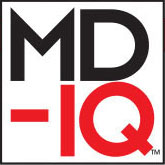Q1. Correct answer: D. Rabeprazole
Rationale
Within-class switching of proton pump inhibitors (PPIs) for patients with incomplete control of symptoms is frequently done in clinical practice. For the management of gastroesophageal reflux disease, this practice can be "considered" according to guidelines. More recent data suggest varying potencies of PPIs might be responsible for some patient's incomplete response. When measured as omeprazole equivalents, the relative potencies of standard-dose pantoprazole, lansoprazole, omeprazole, esomeprazole, and rabeprazole have been estimated at 0.23, 0.90, 1.00, 1.60, and 1.82 OEs, respectively.
References
- Graham DY and Tansel A. Clin Gastroenterol Hepatol. 2018;16(6):800-8.e7. doi: 10.1016/j.cgh.2017.09.033
- Katz PO et al. Am J Gastroenterol. 2022;117(1):27-56. doi: 10.14309/ ajg.0000000000001538
- Kirchheiner J et al. Eur J Clin Pharmacol. 2009;65(1):19-31. doi: 10.1007/s00228-008-0576-5


